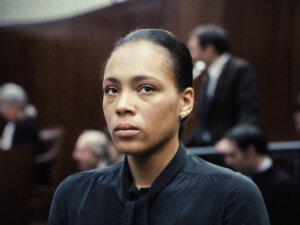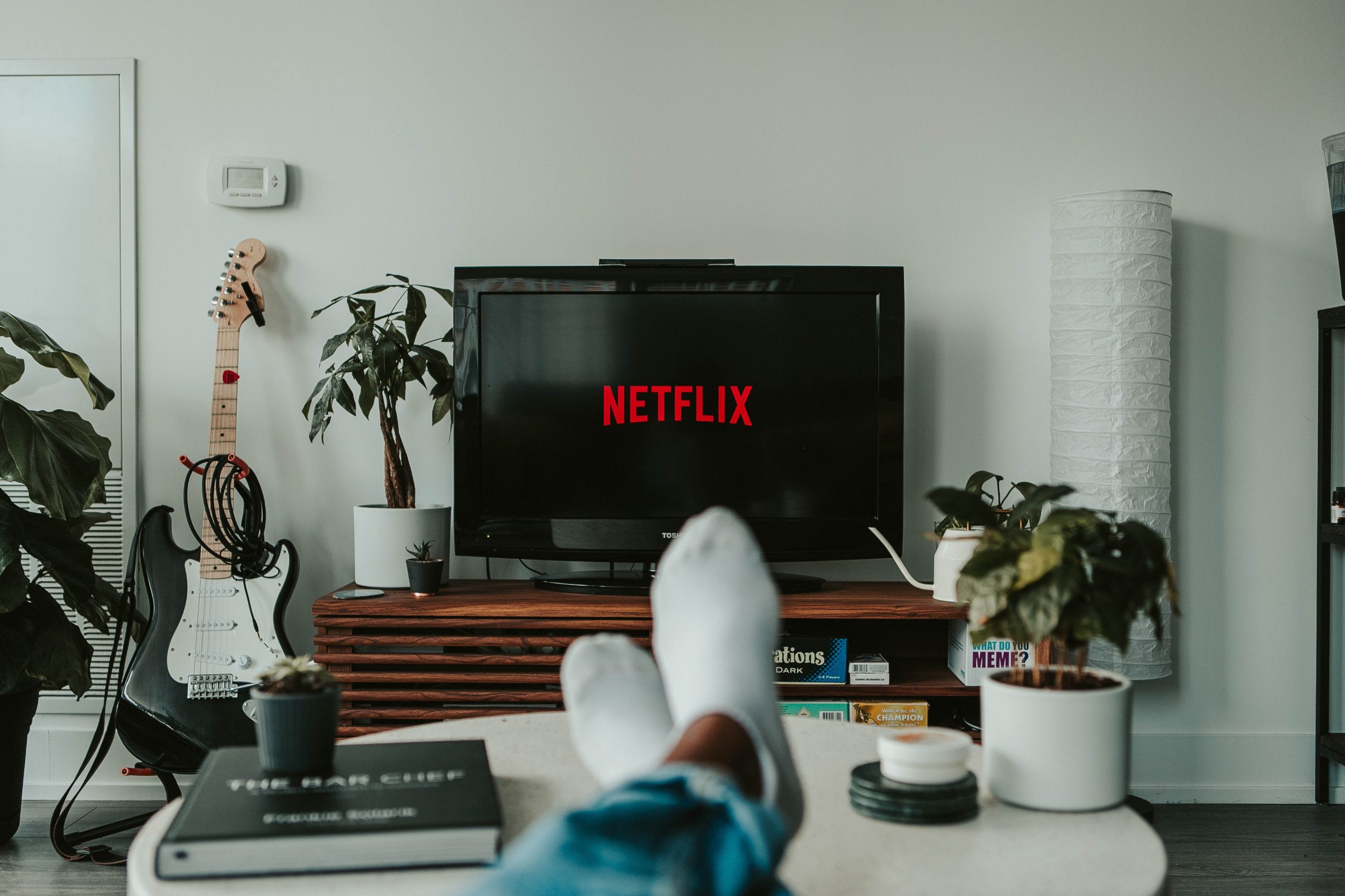Arieh Worthalter plays Pierrre Goldman in ‘The Goldman Case.’ Courtesy of Menemsha Films
French filmmaker Cédric Kahn’s The Goldman Case explores the much politicized and sensationalized 1975 trial of the charismatic Pierre Goldman (Arieh Worthalter) who, depending on your point of view, was a criminal, a victim, a hero, all of the above or something else altogether.
Born in 1944, the son of Polish Jewish refugees who were both resistance fighters and Communists, Goldman viewed himself, and was indeed viewed by his many like-minded followers and groupies, as a left-wing intellectual-revolutionary.
Here he is charged with multiple armed robberies and the double murder of two women in a pharmacy holdup. Although he readily admits to the burglaries, Goldman vehemently maintains his innocence in connection with the killings. Violence towards innocent women defies the very core of his being, he insists. More to the point, he argues, despite eyewitness testimony to the contrary, he was simply not at the scene when the women were killed.
Political ideology, antisemitism, racism and complex Jewish identity issues, are central to the film and interwoven throughout. Some still resonate, others not so much.
The sparse and minimalist film — devoid of flashbacks, music, and elaborate camerawork — effectively evokes a claustrophobic place, literal and metaphoric. The narrative unfolds almost entirely in the courtroom and centers on the actual trial. Speeches and interchanges are lifted verbatim from trial transcripts, and the film was largely inspired by Goldman’s memoir, Dim Memories of a Polish Jew Born in France, written while he was in prison. The creators do concede that some liberties were taken with the material, most pointedly in creating a composite based on two Goldman trials, held in 1974 and 1975.
Much of the proceedings evokes the circus atmosphere of the Chicago 7 Trial. Reporters largely defended Goldman and he had his celebrity admirers, including Sartre and Simone Signoret.

Worthaler’s Goldman is a complex and contradictory character, a romantic anti-hero who embraces his meteoric mood swings and eruptions of rage and seems to see himself as an heir to Alfred Dreyfus.
Goldman believed — or made the jurors feel that he believed — in his innocence and his certainty that he’d be convicted by a fascist, racist, antisemitic police force who planted evidence and intimidated witnesses, many of whom were Black, for a case that was circumstantial at best.
Nonetheless, Goldman does not allow his attorneys to interrogate his friends, even those who had turned on him. “I don’t rat out anybody,” he says. Further, he is loath to accept a parade of character witnesses to speak on his behalf on the grounds that he is clearly not a moral figure and that his character has nothing to do with the facts of the case. He either shot the women or didn’t.
“I’m innocent because I’m innocent,” he says, fully aware that the stakes couldn’t be higher. A convicted murderer at the time might have faced the death penalty.
The acting all around is memorable — particularly from Nicolas Briançon as the arrogant and abrasive prosecuting attorney Garraud and Jerzy Radziwilowicz as Goldman’s dad whose silence and stoicism belies great anguish. The most unsettling and moving performance comes from Maxime Tshibangu as Lautric, Goldman’s closest friend and betrayer.
French courtroom dramas seem to be in vogue. Last year we had Anatomy of a Fallwhich won a Best Screenplay Oscar for co-writers Justine Triet and Arthur Harari, who plays a smart, sensitive and beleaguered attorney for the defense in The Goldman Case. Stripped of politics and social commentary, it presented a straightforward fictional who-done-it courtroom thriller.
Two years ago, Saint Omera film that overlaps with The Goldman Case in terms of its setting, its politics, and its themes, focused its lens on immigration, race and, most central, a bigoted and unjust judicial system.
French courtroom proceedings embody their own special drama, both similar to and different from American jurisprudence. The judge is an almost autocratic figure and jurors are free to question witnesses. And, in The Goldman Casethe courtroom becomes a microcosm for the society at large.
The attorneys, representing Goldman and the families of the murdered women are unabashed spokespersons for their own ideologies. Their questions, commentaries, and their view of Goldman emerge from clearly defined political and cultural perspectives.
The defense paints Goldman in a humanistic light: a child of a broken home, whose mother jumped ship, and who always compared himself unfavorably to his father who had killed Nazis.
By contrast, the prosecuting attorney Garraud, proudly reflecting the sensibilities of a smug mainstream middle class casts Goldman as a gun-wielding thug, who dons a revolutionary guise as a form of camouflage.
Jewish themes are an integral element too. Goldman loudly proclaims his Jewishness whose connection to the Holocaust is seminal to everything about him — his rage, his politics, and his affinity for other minorities, especially Blacks with whom he formed a special alliance.
Goldman’s two attorneys are also Jews but at first, only Chouraqui wants to incorporate Goldman’s status as a French Jew into his defense. Kiejmanhe, a pragmatic centrist, steers clear of the topic and Goldman fires him, accusing him of being an “armchair Jew.” It’s an enigmatic phrase, but one assumes that in the mid-70s, a time frame still close enough to the Holocaust, it might have referred to a kind of passivity, accommodation, or Jewish self-denial.
Yet at the end, after Goldman reinstates him and Kiejman zeros in on Goldman’s Eastern European Jewish roots as an argument for his defense, Goldman disagrees with that approach — he says he wants to be judged only by the facts of the case.
“I don’t want anyone to say I acted like a Jew who implied a non-Jew has no right to think a Jew can kill, and those who do are antisemitic,” Goldman tells the court.
It’s a stunning statement that has contemporary resonance, within limited parameters. Antisemitism’s connecting threads exist, but antisemitism is also a shape shifter defined by the specifics of its time and place. Contrary to what the creative team seems to imply, antisemitism today is not the same antisemitism that Goldman or Alfred Dreyfus experienced. For starters, Goldman is no Dreyfus. But more to the point, France in the mid-70s is not the France of the late 19th Century or France today.
That said, The Goldman Case is a gripping, multi-layered film whose titular character is an intriguing, inscrutable figure. It is no spoiler to say that in the end he was found not guilty of murder. Still, it is quite possible he got away with it. We just don’t know. Likewise, his death is also shrouded in mystery. Three years after he left the court a free man he was assassinated; the assailant remains at large.

I hope you appreciated this article. Before you go, I’d like to ask you to please support the Forward’s award-winning, nonprofit journalism during this critical time.
Now more than ever, American Jews need independent news they can trust, with reporting driven by truth, not ideology. We serve you, not any ideological agenda.
At a time when other newsrooms are closing or cutting back, the Forward has removed its paywall and invested additional resources to report on the ground from Israel and around the U.S. on the impact of the war, rising antisemitism and the protests on college campuses.
Readers like you make it all possible. Support our work by becoming a Forward Member and connect with our journalism and your community.
— Rachel Fishman Feddersen, Publisher and CEO

















